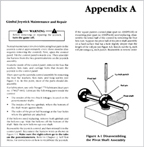
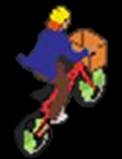



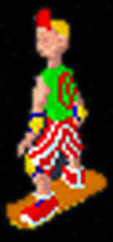



720° ROTARY CONTROLLER REBUILD
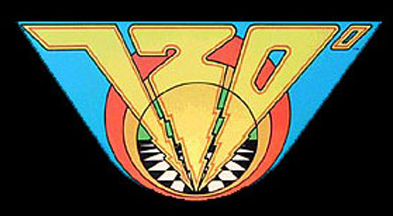
When I received my 720° the controller was sluggish and it spun around pretty roughly and for a short duration, so I proceeded to rebuild it to make it work as new. It now spins freely and movement during the game is really fluid in comparison to how it was before the rebuild. So as you can see below, the rotary controller consists of a lot of different parts:
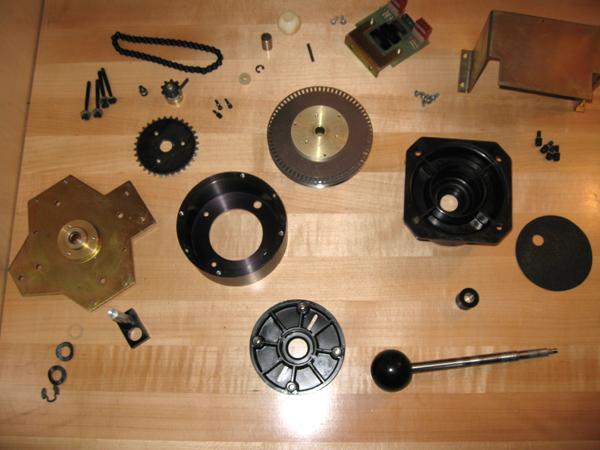
The most common parts that get worn out are the "pivot ball" and the "roller". In the case of my controller I also replaced the "lower ball" as I had it on hand.
You can see these parts listed in the below diagram for the upper half of the controller:
You can see these parts listed in the below diagram for the upper half of the controller:
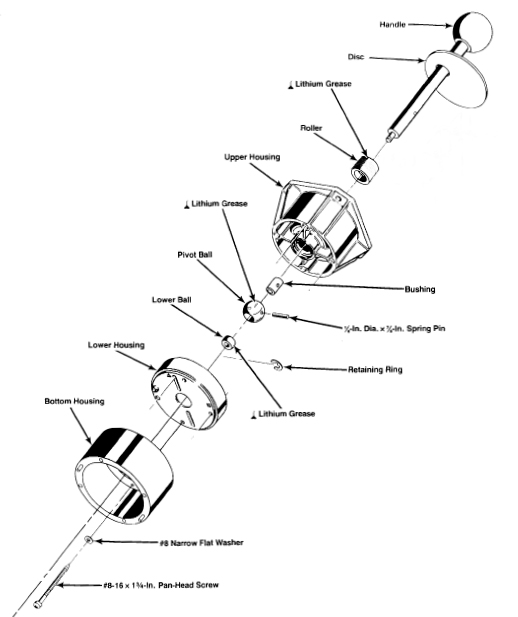
And for reference, here's the the diagram for the lower half:
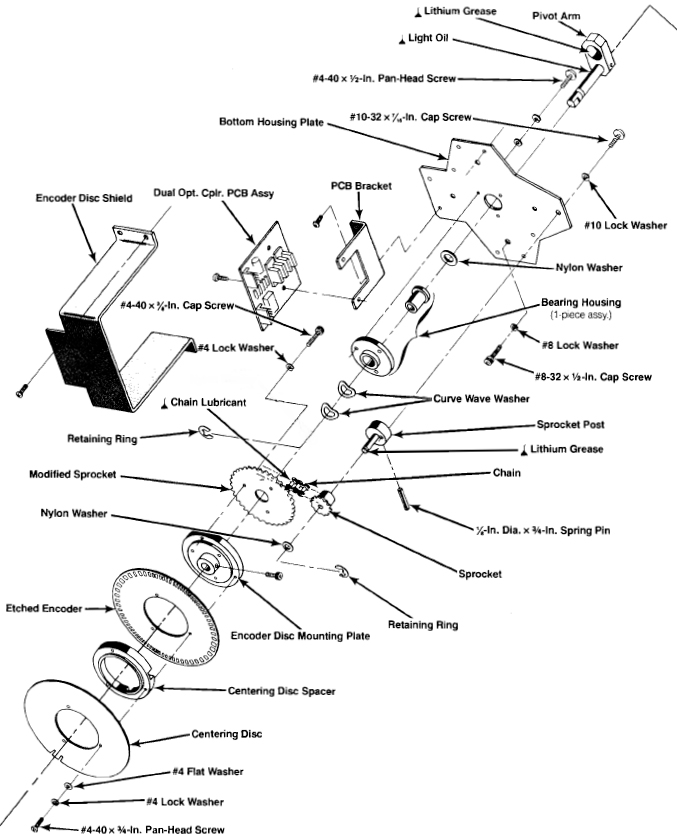
In the below picture, the parts on the left are the old roller, old pivot ball and old lower ball that were on my controller, and on the right are NOS parts:
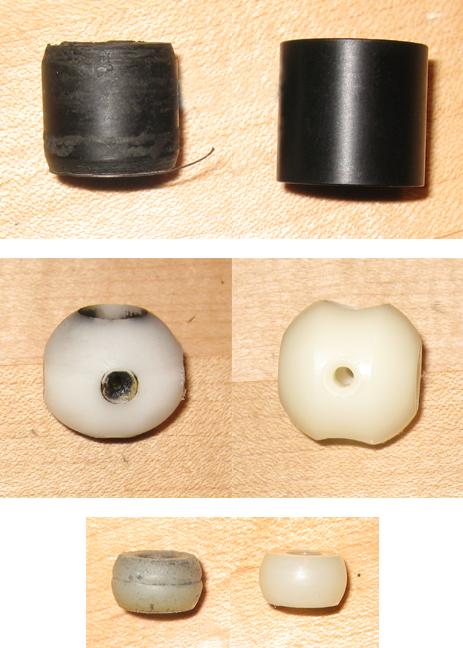
To replace the roller and the pivot ball you'll need to take the controller apart, and specifically, you'll need to remove the pin that keeps the pivot ball in place. Note that a "bushing" sits inside the pivot ball.


The following are directions about how to replace the roller and the pivot ball. Thinking about dismantling this controller and putting it back together again may seem a bit overwhelming, but just keep the diagrams handy (these diagrams are in the manual as well) and pay attention to what you're doing and you'll get it done in about 30 minutes or so.
Start by taking off the "encoder disc shield" and the "dual optic coupler pcb assembly". After that, remove the sprocket assembly (below), clean those parts, lubricate the sprocket post with white lithium grease, and put it all back together and set it aside.
Start by taking off the "encoder disc shield" and the "dual optic coupler pcb assembly". After that, remove the sprocket assembly (below), clean those parts, lubricate the sprocket post with white lithium grease, and put it all back together and set it aside.

You can now remove the chain and clean and lubricate it. I twice doused and wiped down the chain with a dual chain cleaner/lube, and then applied a final dousing after it was clean and set it aside. The grime that you see on the towel below all came off that chain.

Now take off the etched encoder disc/centering disc unit. NOTE: there's no need to completely disassemble the disc unit. Leave the 3 screws that are on the bottom of the centering disc alone. All you need to do is loosen the 2 hex screws that keep that whole disc assembly secured to the shaft. When handling these discs be gentle and be careful not to drop them as they are very thin and bend pretty easily.
Ok now you can remove the retaining ring and washers that keep the "pivot arm" in place, and remove the hex screws that secure the bottom housing plate to the bottom housing. Once that's done you'll most likely be looking at a pivot ball and a upper housing that looks like this:
Ok now you can remove the retaining ring and washers that keep the "pivot arm" in place, and remove the hex screws that secure the bottom housing plate to the bottom housing. Once that's done you'll most likely be looking at a pivot ball and a upper housing that looks like this:

Now it's time to remove the pin keeping the pivot ball (with bushing) in place. I placed the free end of the shaft in a small vise (available at Home Depot, Lowe's, etc.), and used a small tap and hammer and eased it out. You can also make your own device to aid in the pin removal by getting a small piece of wood and drilling a hole through out. Refer to Appendix A below (taken from the Food Fight manual whose joystick also utilizes a roll pin):
CLICK IMAGE TO ENLARGE
Once the pin is out, take the bushing out and clean it. I used one of my larger taps and gave it a moderate push and it came right out. Clean that bushing, and then put it in your new pivot ball, and then coat the entire ball with white lithium grease. Now that the shaft is free, remove and toss out the old roller and clean the shaft and both sides of the upper housing really well. Insert the new roller and coat it with the grease, and then coat the lower interior of the upper housing (just the areas that the roller will be making contact with). Then put the shaft back through the housing, insert the pivot ball (with the bushing inside it) and align it's holes with the hole on the shaft. Now place the shaft back in the vise, and tap in place the pin that keeps the pivot ball secured:

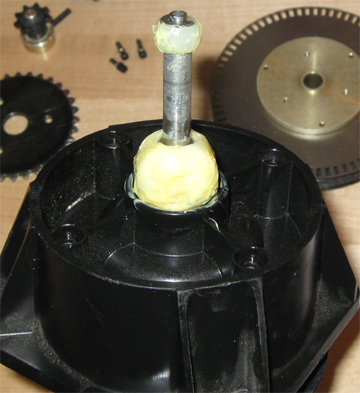
Now attach the lower housing to the upper housing with the 4 long pan-head screws:
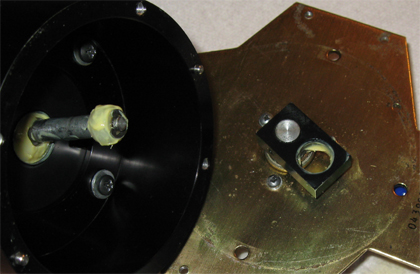
If you have a lower ball to replace do that now. And whether you replace that or not, you need to lube that part and also lube the interior of the "pivot arm" hole (that black piece) with white lithium grease. Be generous with this grease and spread a nice thick layer. The "pivot arm" shaft should be coated with a light oil like machine tool oil (not 3in1 which is heavier). Secure the pivot arm and and reassemble the main housing. Now it's time to put on the disc unit, chain, and sprocket assembly (it's easiest to put them on in that order). Screw in the hex screw that keeps the sprocket post in place but DO NOT tighten it. If you tighten it too much, you won't be able to fine tune the chain and this is critical for smooth and free rotation of the controller.
Note the position of the spring pin in the below picture (the top yellow arrow points to this). This is a good positioning for the sprocket at this point. You will notice some slack in the chain as well (the lower yellow arrow points to this).
Note the position of the spring pin in the below picture (the top yellow arrow points to this). This is a good positioning for the sprocket at this point. You will notice some slack in the chain as well (the lower yellow arrow points to this).
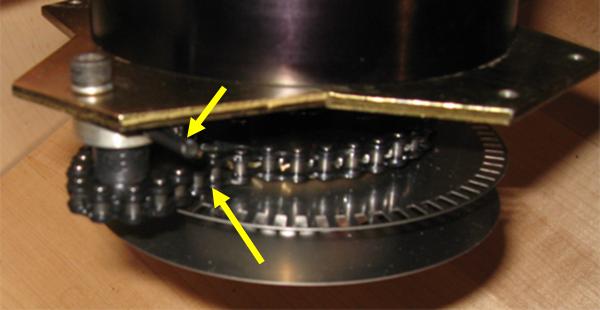
Now you can pull the spring pin toward you but don't make the chain too tight. You want to leave very slight play in it.

Test the controller now by moving it around in both directions. If it's not smooth or if it catches, you have the chain too tight. When you've got it perfect, now it's time to tighten the hex screw but again DO NOT over tighten. If it's too tight it will keep the sprocket from moving period. Again, experiment to find the perfect tension.

Now attach the encoder disc shield and the dual coupler pcb assembly. There are two screws securing the coupler assembly, and you need to find the sweet spot regarding the positioning of the bracket. You want them sitting like this:

NOTE: **If the bracket is aligned too far inward your discs will rub against the optics.**
You are now finished, congrats on a job well done.
You are now finished, congrats on a job well done.
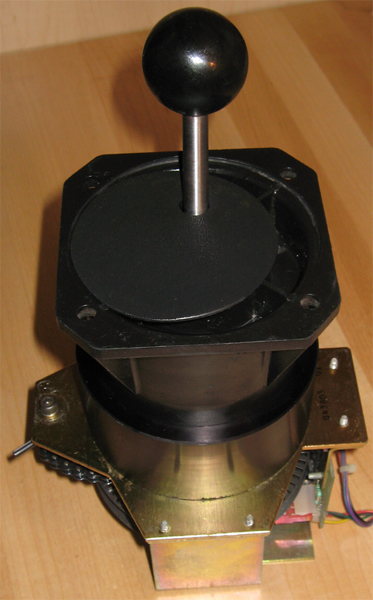
I made a quick video showing how smoothly the controller is moving now, you can check it out here: http://www.youtube.com/watch?v=Y7iikKiBKRU
FINAL NOTE: There are 2 versions of shafts and roller configurations existing for this controller. You may have the earlier version and if so, please refer to Jeff Civitate's excellent 720° Joystick Help page at his site, the 720 Zone: http://www.720zone.com/720-Joystick-Help.html. If you do have the earlier version, it's not a problem to use the big roller in place of that small roller. The big roller will just sit lower and will keep itself in place. On the early version the small roller sits in a notched area secured by 2 clamps. On the later version the big roller sits further down and acts as a dual purpose roller and spacer, and thus the clamps are not needed. Also note that your version of the manual may reflect the early revision shaft.
FINAL NOTE: There are 2 versions of shafts and roller configurations existing for this controller. You may have the earlier version and if so, please refer to Jeff Civitate's excellent 720° Joystick Help page at his site, the 720 Zone: http://www.720zone.com/720-Joystick-Help.html. If you do have the earlier version, it's not a problem to use the big roller in place of that small roller. The big roller will just sit lower and will keep itself in place. On the early version the small roller sits in a notched area secured by 2 clamps. On the later version the big roller sits further down and acts as a dual purpose roller and spacer, and thus the clamps are not needed. Also note that your version of the manual may reflect the early revision shaft.
Copyright ©2004-2011. All rights reserved.
